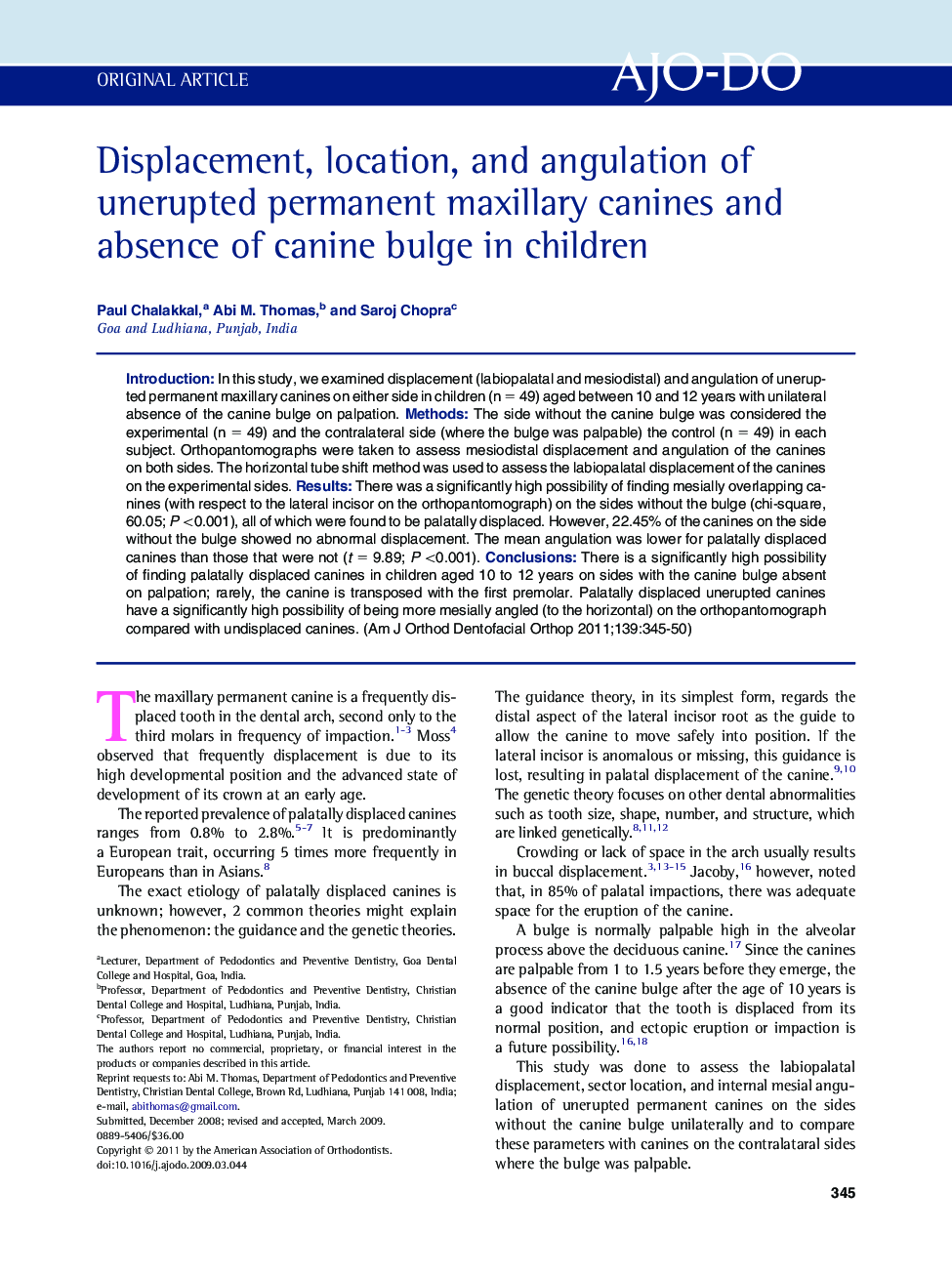| Article ID | Journal | Published Year | Pages | File Type |
|---|---|---|---|---|
| 3117125 | American Journal of Orthodontics and Dentofacial Orthopedics | 2011 | 6 Pages |
IntroductionIn this study, we examined displacement (labiopalatal and mesiodistal) and angulation of unerupted permanent maxillary canines on either side in children (n = 49) aged between 10 and 12 years with unilateral absence of the canine bulge on palpation.MethodsThe side without the canine bulge was considered the experimental (n = 49) and the contralateral side (where the bulge was palpable) the control (n = 49) in each subject. Orthopantomographs were taken to assess mesiodistal displacement and angulation of the canines on both sides. The horizontal tube shift method was used to assess the labiopalatal displacement of the canines on the experimental sides.ResultsThere was a significantly high possibility of finding mesially overlapping canines (with respect to the lateral incisor on the orthopantomograph) on the sides without the bulge (chi-square, 60.05; P <0.001), all of which were found to be palatally displaced. However, 22.45% of the canines on the side without the bulge showed no abnormal displacement. The mean angulation was lower for palatally displaced canines than those that were not (t = 9.89; P <0.001).ConclusionsThere is a significantly high possibility of finding palatally displaced canines in children aged 10 to 12 years on sides with the canine bulge absent on palpation; rarely, the canine is transposed with the first premolar. Palatally displaced unerupted canines have a significantly high possibility of being more mesially angled (to the horizontal) on the orthopantomograph compared with undisplaced canines.
